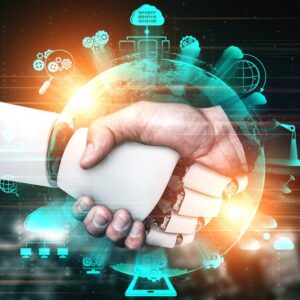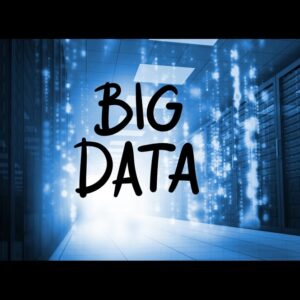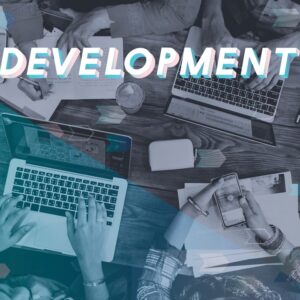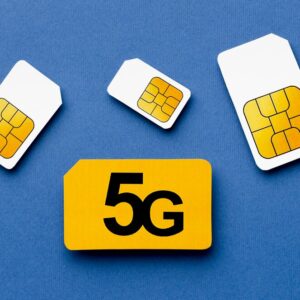The advent of the Internet of Things (IoT) has revolutionized our lifestyle and the way we engage with technological advancements. In simple terms, IoT refers to the network of interconnected devices that communicate and share data. This article explores the intricacies of IoT, covering its definition, examples, applications, and the challenges it presents.
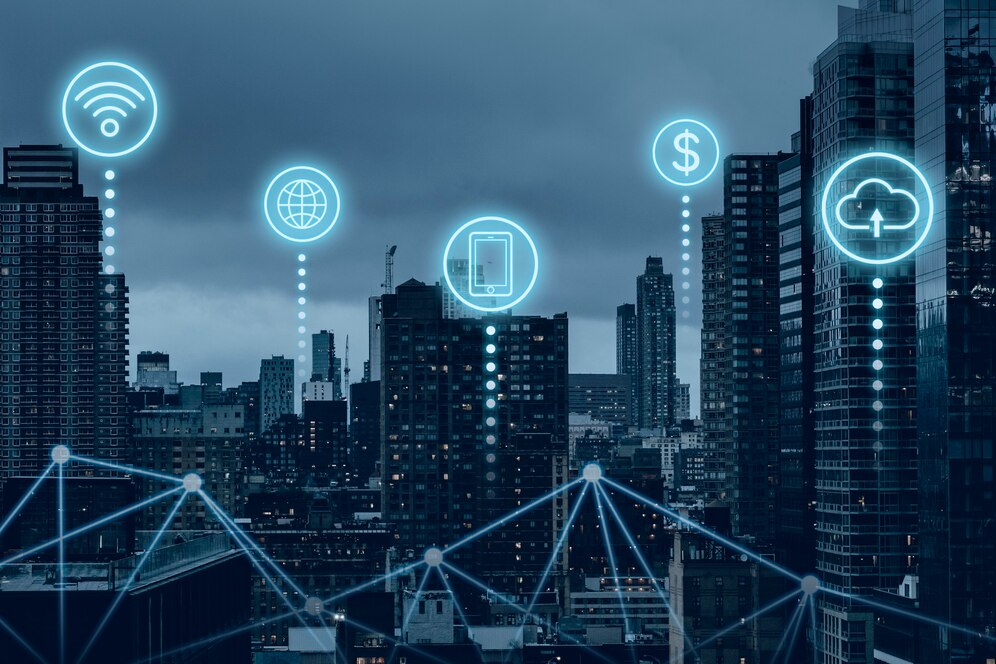
What is the Internet of Things?
At its core, the Internet of Things encompasses a vast network of devices – from smart thermostats and wearable fitness trackers to industrial sensors and autonomous vehicles. This interconnectedness allows these devices to collect and exchange data, providing users with unprecedented convenience and control.
History of the Internet of Things (IoT)
The history of the Internet of Things (IoT) dates back several decades, marked by the evolution of technology and the increasing connectivity of devices. Here’s a brief overview of key milestones in the development of IoT:
Conceptualization (Late 20th Century)
The concept of interconnected devices was first introduced in the late 20th century. The idea involved enabling objects and machines to communicate with each other, paving the way for a more automated and efficient world.
First Internet Appliance (1990s)
The term “Internet of Things” was coined by Kevin Ashton in 1999. Around the same time, the first internet appliance, a Coca-Cola vending machine at Carnegie Mellon University, was connected to the internet to report its inventory and temperature.
RFID Technology (Early 2000s)
Radio-frequency identification (RFID) technology played a crucial role in the early development of IoT. It allowed objects to be identified, tracked, and managed remotely. RFID tags started being used in supply chain management and logistics.
Smart Homes and Wearables (Mid-2000s)
The mid-2000s saw the emergence of smart homes and wearable technology. Devices like smart thermostats and fitness trackers became early examples of IoT in everyday life, offering users greater control and personalization.
IPv6 Adoption (Late 2000s)
The adoption of Internet Protocol version 6 (IPv6) became essential for the growth of IoT. IPv6 provides a vastly expanded address space, accommodating the multitude of devices expected to be connected to the internet.
Industrial IoT (IIoT) (2010s)
The focus shifted to the Industrial Internet of Things (IIoT) in the 2010s, with increased integration of IoT devices in industrial processes. This led to improvements in efficiency, predictive maintenance, and overall operational optimization.
Proliferation of Connected Devices (2010s – Present)
The number of connected devices began to soar, ranging from smart home devices and wearables to industrial sensors and autonomous vehicles. The diversity of applications expanded, influencing sectors like healthcare, agriculture, and transportation.
Standardization Efforts (2010s – Present)
Various organizations and consortia, including the Industrial Internet Consortium (IIC) and the Open Connectivity Foundation (OCF), have worked towards establishing standards and protocols for IoT. Standardization is crucial for interoperability and seamless communication between devices.
Edge Computing (2010s – Present)
Edge computing gained prominence in IoT architectures. Processing data closer to the source (at the edge) reduces latency and enhances real-time decision-making, especially in applications requiring quick responses.
5G Technology (2020s – Present)
The advent of 5G technology has further accelerated the growth of IoT. With faster and more reliable connectivity, 5G supports the massive data transfer requirements of IoT applications, enabling more advanced and complex implementations.
Why is the Internet of Things (IoT) Important?
The Internet of Things (IoT) holds paramount importance in our increasingly interconnected world. Here are some key reasons why IoT is crucial:
Enhanced Efficiency
IoT devices streamline processes and automate tasks, leading to increased efficiency in various industries. This efficiency translates into time and cost savings.
Improved Convenience in Daily Life
Everyday devices, from smart thermostats to wearable gadgets, make our lives more convenient. IoT brings automation and customization to our homes and personal devices.
Data-driven Decision Making
IoT generates vast amounts of data through interconnected devices. This data can be analyzed to gain valuable insights, enabling informed decision-making in businesses and organizations.
Optimization in Industries
In industrial settings, IoT plays a pivotal role in optimizing operations. Real-time data from sensors and devices allows for better resource management, reduced downtime, and improved overall efficiency.
Healthcare Advancements
In healthcare, IoT facilitates remote patient monitoring, smart medical devices, and personalized treatment plans. This not only improves patient care but also allows for more efficient healthcare delivery.
Smart Cities and Sustainable Living
IoT contributes to the development of smart cities by optimizing traffic flow, managing energy consumption, and improving public services. This fosters sustainable living and urban development.
Innovation and Business Transformation
The integration of IoT technologies fosters innovation across industries. Businesses that leverage IoT can transform their operations, offer new services, and stay competitive in rapidly evolving markets.
Enhanced Safety and Security
IoT devices contribute to improved safety and security through surveillance cameras, smart home security systems, and industrial monitoring. This helps in preventing and addressing potential threats.
Real-time Monitoring and Control
The ability to monitor and control devices in real time is a significant advantage of IoT. This feature is valuable in various applications, such as industrial processes, smart agriculture, and environmental monitoring.
Consumer Empowerment
IoT empowers consumers by providing them with more control over their surroundings. From smart homes to connected vehicles, individuals can customize and manage their environments to suit their preferences.
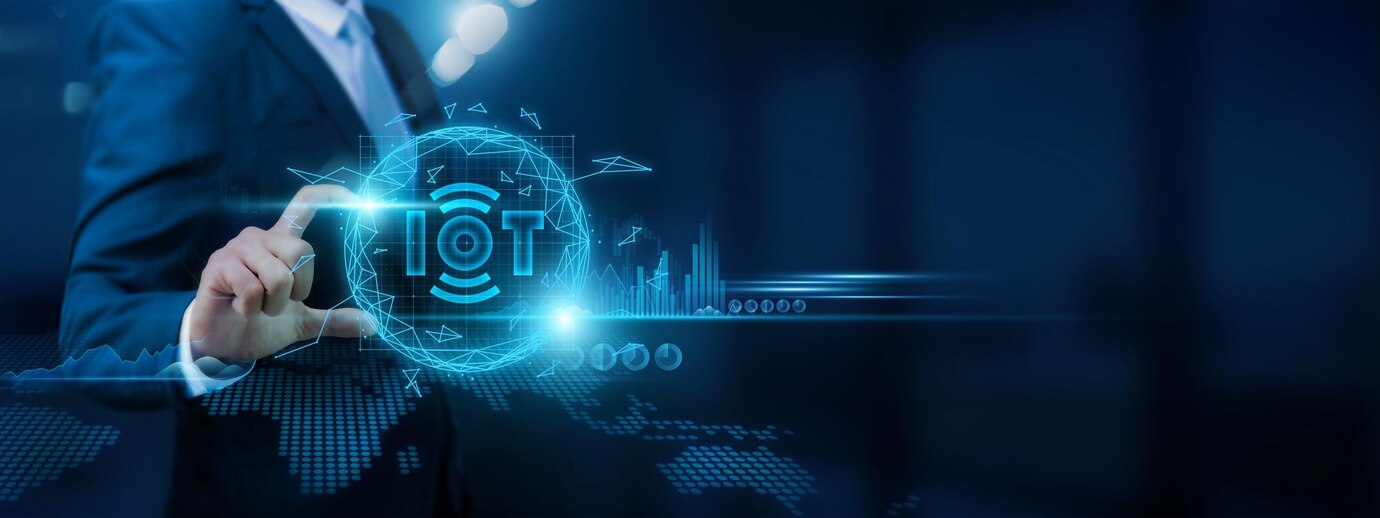
How Does the Internet of Things (IoT) Work?
The Internet of Things (IoT) operates through a network of interconnected devices, enabling them to communicate, collect data, and share information seamlessly. Here’s a simplified explanation of how IoT works:
Sensors and Devices
IoT begins with the deployment of sensors and devices equipped with embedded technology. These devices can range from simple sensors to complex gadgets like smart thermostats, wearables, and industrial machinery.
Data Collection
Sensors within IoT devices collect data by monitoring specific parameters or activities. This data can include anything from temperature and humidity to motion, location, or even health metrics, depending on the device’s purpose.
Connectivity
IoT devices are designed to be connected to the internet or local networks. This connectivity allows them to transmit the collected data to centralized servers or other connected devices.
Data Transmission
The collected data is transmitted through various communication protocols, such as Wi-Fi, Bluetooth, Zigbee, or cellular networks. This transmission can be near real-time or scheduled, depending on the application.
Cloud Computing
In many cases, the data from IoT devices is sent to cloud-based platforms. Cloud computing offers storage, processing power, and the ability to analyze large datasets. It also provides a centralized location for managing and accessing the data.
Data Processing and Analysis
Once in the cloud, the data undergoes processing and analysis. This step involves extracting valuable insights, identifying patterns, and making sense of the information collected. Advanced analytics and machine learning algorithms may be employed for more complex data interpretation.
Decision-Making
Based on the analyzed data, decisions or actions are triggered. This can range from automated responses within the IoT device itself to sending commands to other connected devices or systems.
User Interface
Many IoT applications include a user interface, such as a mobile app or a web dashboard, allowing users to monitor and control their IoT devices. This interface facilitates user interaction, customization, and feedback.
Feedback Loop
IoT systems often incorporate a feedback loop where the outcomes of actions are monitored. This feedback can be used to refine future decisions or improve the overall functionality of the IoT system.
Security Measures
Security is a crucial aspect of IoT. Encryption, authentication, and other security measures are implemented to safeguard the data being transmitted and to protect the devices from unauthorized access.
Examples of Internet of Things (IoT)
The Internet of Things (IoT) has a wide range of applications across various sectors, enhancing efficiency, convenience, and connectivity. Here are some examples of IoT in action:
Smart Home Devices
- Smart thermostats (e.g., Nest) that adjust temperature based on user preferences.
- Connected lighting systems allowing remote control and automation.
- Home security systems with smart cameras, doorbell cameras, and sensors.
Wearable Technology
- Fitness trackers and smartwatches that monitor health metrics and provide real-time feedback.
- Smart clothing with embedded sensors for health monitoring or environmental sensing.
Industrial Internet of Things (IIoT)
- Sensors in manufacturing equipment for predictive maintenance.
- RFID tags for tracking and managing inventory in warehouses.
- Smart meters for monitoring and optimizing energy usage in industrial settings.
Smart Agriculture
- Soil sensors and weather stations for precision farming.
- Connected irrigation systems that optimize water usage based on environmental conditions.
- Livestock monitoring devices for health and behavior tracking.
Healthcare Applications
- Remote patient monitoring devices for real-time health data collection.
- Smart pill dispensers with IoT connectivity for medication adherence.
- Wearable health devices provide continuous monitoring for chronic conditions.
Connected Vehicles
- Telematics systems in cars for tracking location, vehicle health, and driver behavior.
- IoT-enabled traffic management systems for optimizing flow and reducing congestion.
- Autonomous vehicles utilizing IoT sensors for navigation and safety.
Smart Cities
- Intelligent traffic management systems for optimizing signal timings.
- Smart parking solutions that guide drivers to available parking spaces.
- Waste management systems with IoT sensors for efficient garbage collection.
Retail and Supply Chain
- RFID tags for tracking and managing inventory in retail stores.
- Smart shelves that monitor product availability and send restocking alerts.
- Connected delivery and logistics systems for real-time tracking.
Environmental Monitoring
- IoT-enabled air quality monitors for pollution tracking.
- Smart water management systems to monitor and conserve water resources.
- Wildlife tracking devices using IoT for research and conservation efforts.
Smart Energy Management
- Smart grids with IoT sensors for efficient energy distribution.
- Home energy management systems that optimize usage based on patterns.
- IoT-enabled devices that monitor and control energy consumption in real-time.
What are the Benefits of IoT to Organizations?
The adoption of the Internet of Things (IoT) brings several significant benefits to organizations across various industries. Here are some key advantages:
Operational Efficiency
IoT enables organizations to streamline and optimize their operations. Through real-time monitoring and data-driven insights, processes become more efficient, reducing downtime, minimizing delays, and enhancing overall productivity.
Cost Savings
Improved efficiency, predictive maintenance, and resource optimization result in cost savings for organizations. IoT helps in better asset management, reducing unnecessary expenditures on maintenance and increasing the lifespan of equipment.
Data-Driven Decision Making
The data generated by IoT devices provides valuable insights. Organizations can make informed decisions based on this data, helping them understand customer behavior, market trends, and operational patterns more effectively.
Enhanced Customer Experience
IoT applications contribute to a better customer experience by offering personalized and responsive services. From smart retail experiences to connected healthcare solutions, organizations can meet the evolving expectations of their customers.
Improved Safety and Security
In industries like manufacturing, IoT sensors contribute to enhanced workplace safety by monitoring equipment conditions and detecting potential hazards. Security systems integrated with IoT devices provide real-time monitoring and alerts, reducing the risk of unauthorized access and breaches.
Supply Chain Optimization
IoT facilitates better visibility and control over the supply chain. Organizations can track the movement of goods, monitor inventory levels in real time, and optimize logistics and distribution processes for improved efficiency.
Predictive Maintenance
IoT sensors on machinery and equipment enable predictive maintenance by monitoring performance and identifying potential issues before they result in failures. This helps organizations schedule maintenance activities proactively, reducing downtime and extending equipment lifespan.
Energy Efficiency
IoT contributes to energy conservation by enabling organizations to monitor and control energy consumption in real time. Smart building systems, for instance, can adjust lighting, heating, and cooling based on occupancy and environmental conditions, leading to energy savings.
Innovation and Competitive Advantage
Organizations embracing IoT demonstrate innovation in their operations and services. This innovation can provide a competitive edge, attracting customers who seek modern and efficient solutions.
Remote Monitoring and Management
IoT allows organizations to remotely monitor and manage devices, assets, and facilities. This is particularly valuable for global enterprises with distributed operations, reducing the need for physical presence and on-site maintenance.
Compliance and Quality Assurance
In industries with strict regulations, such as healthcare and manufacturing, IoT helps ensure compliance with standards. It also contributes to quality assurance by monitoring and controlling processes to meet specified standards and requirements.
Data Monetization
Organizations can explore opportunities to monetize the data generated by IoT devices. Aggregated and anonymized data can be valuable for research, market analysis, and partnerships, creating additional revenue streams.
What are the Advantages & Disadvantages of Internet of Things (IoT)?
Advantages of Internet of Things (IoT)
Operational Efficiency
IoT enhances operational efficiency by automating processes, reducing manual intervention, and optimizing resource usage.
Cost Savings
Organizations can achieve cost savings through predictive maintenance, efficient energy usage, and streamlined operations enabled by IoT.
Data-Driven Decision Making
The data generated by IoT devices provides valuable insights, enabling informed and data-driven decision-making.
Improved Quality of Life
In everyday life, IoT contributes to improved convenience, safety, and comfort through smart homes, wearables, and connected devices.
Innovation and Competitive Advantage
Adopting IoT technologies allows organizations to innovate, stay competitive, and differentiate their products and services in the market.
Enhanced Safety and Security
IoT applications improve safety through real-time monitoring of equipment and environments, and security is enhanced with connected surveillance and access control systems.
Remote Monitoring and Control
Remote monitoring capabilities enable organizations to manage and control devices and assets from anywhere, reducing the need for physical presence.
Smart Cities and Infrastructure
IoT contributes to the development of smart cities, optimizing traffic flow, managing resources, and enhancing overall urban living.
Healthcare Advancements
In healthcare, IoT enables remote patient monitoring, personalized treatment plans, and improved healthcare delivery.
Environmental Benefits
IoT applications in agriculture support sustainable farming practices, and environmental monitoring contributes to conservation efforts.
Disadvantages of Internet of Things (IoT)
Security Concerns
Security is a major challenge with IoT, as interconnected devices become potential targets for cyberattacks, leading to data breaches and privacy issues.
Privacy Issues
The vast amount of personal data collected by IoT devices raises concerns about user privacy, leading to potential misuse of sensitive information.
Interoperability Challenges
Lack of standardized protocols and interoperability between different IoT devices and platforms can hinder seamless integration and communication.
Complexity and Integration Costs
Implementing and managing IoT systems can be complex, requiring significant investments in infrastructure, technology, and skilled personnel.
Reliability and Downtime
The reliability of IoT devices and networks is crucial, and system failures or downtime can have significant consequences, especially in critical applications.
Limited Scalability
Some IoT systems may face scalability issues as the number of connected devices increases, potentially leading to performance issues.
Energy Consumption
IoT devices may require continuous power sources, and the need for frequent charging or battery replacements can be a challenge, especially for remote or embedded devices.
Data Overload
The sheer volume of data generated by IoT devices can be overwhelming. Managing and analyzing this data efficiently pose challenges, and organizations may face data overload.
Ethical Considerations
The ethical use of IoT data, including issues related to consent, data ownership, and responsible AI, raises ethical considerations that need careful attention.
Regulatory Compliance
Compliance with evolving regulations and standards for data protection and security is a challenge, especially with varying legal frameworks in different regions.
The Future of Internet of Things (IoT)
The future of the Internet of Things (IoT) holds tremendous potential, with ongoing advancements in technology shaping its trajectory. Here are key trends and expectations for the future of IoT:
5G Connectivity
The rollout and widespread adoption of 5G networks will significantly impact IoT. With faster speeds, lower latency, and increased capacity, 5G will enable more seamless communication between devices, supporting applications that require real-time data processing.
Edge Computing Expansion
Edge computing will continue to gain prominence in IoT architectures. Processing data closer to the source reduces latency, improves response times, and addresses bandwidth challenges. This is especially crucial for applications requiring quick decision-making, such as autonomous vehicles and industrial processes.
AI and Machine Learning Integration
The integration of artificial intelligence (AI) and machine learning (ML) with IoT will enhance data analysis capabilities. IoT devices will become smarter and more autonomous, making real-time decisions based on patterns and insights derived from large datasets.
Blockchain for Security
Blockchain technology will play a role in enhancing security within the IoT ecosystem. It can provide a decentralized and tamper-resistant ledger, ensuring the integrity and authenticity of data transmitted between devices. This is particularly important for securing critical IoT applications.
More Interconnected Ecosystems
The future will see an even more interconnected ecosystem of devices and platforms. Integration between different IoT devices, applications, and systems will create comprehensive solutions that offer enhanced functionality and user experiences.
IoT in Healthcare Advancements
The healthcare industry will experience significant advancements with the integration of IoT. Remote patient monitoring, personalized treatment plans, and smart medical devices will become more prevalent, improving patient care and healthcare delivery.
Smart Cities Development
Smart city initiatives will continue to evolve, leveraging IoT for urban planning, traffic management, waste management, and overall city optimization. The integration of IoT technologies will contribute to sustainable and efficient urban living.
IoT in Agriculture Growth
The agricultural sector will witness increased adoption of IoT for precision farming, monitoring crop health, and optimizing resource usage. IoT applications will contribute to sustainable and data-driven agriculture practices.
Extended IoT in Industrial Settings (IIoT)
The Industrial Internet of Things (IIoT) will continue to transform manufacturing and industrial processes. Predictive maintenance, automation, and optimization of production processes will become more sophisticated, leading to increased efficiency and reduced costs.
Privacy and Ethics Considerations
As the IoT landscape expands, privacy and ethical considerations will become more prominent. Stricter regulations and standards may emerge to address data privacy issues and ensure responsible and ethical use of IoT technologies.
Diversity in IoT Devices
The range and diversity of IoT devices will increase, catering to specific industry needs and consumer preferences. From smart appliances to specialized industrial sensors, the IoT device ecosystem will continue to diversify.
Focus on Sustainability
Sustainability will be a key consideration in IoT implementations. Energy-efficient devices, eco-friendly practices in manufacturing, and IoT applications contributing to environmental monitoring and conservation will become more prevalent.
Conclusion
In conclusion, the Internet of Things is a transformative force shaping our digital future. Its impact on daily life, industries, and the way we perceive technology is undeniable. As we navigate the complexities of IoT, addressing security concerns and embracing advancements will be key to unlocking its full potential.
Thank you for engaging with the content on this blog. Feel free to visit the great info website regularly for the latest technology trends. Wishing you a fantastic day!
Frequently Asked Questions
Q. How does IoT improve healthcare services?
IoT enhances healthcare through remote monitoring, personalized treatment plans, and smart medical devices.
Q. What are the security issues associated with IoT devices?
Security issues include vulnerabilities to cyber threats, data breaches, and unauthorized access.
Q. Which companies are leading in IoT innovation?
Amazon, Google, and IBM are among the key players driving innovation in the IoT sector.
Q. What role does IoT play in smart cities?
IoT contributes to smart city initiatives by optimizing traffic flow, energy usage, and public services.
Q. How is IoT shaping the future of manufacturing?
IoT in manufacturing leads to improved efficiency, reduced costs, and better overall productivity.
Q. What are the Different Technologies of the Internet of Things (IoT)?
In IoT, various technologies contribute to its diverse ecosystem. These include:
- RFID Technology: Enables device identification.
- Communication Protocols (Zigbee, Bluetooth): Facilitate seamless connectivity.
- Sensors (Accelerometers, Temperature Sensors): Collect diverse data.
- Communication Protocols (MQTT, CoAP): Ensure efficient data exchange.
- Edge Computing and Cloud Platforms: Process and analyze data.
- These technologies collectively build the intricate framework of the Internet of Things, fostering interconnectedness and intelligent functionalities.
